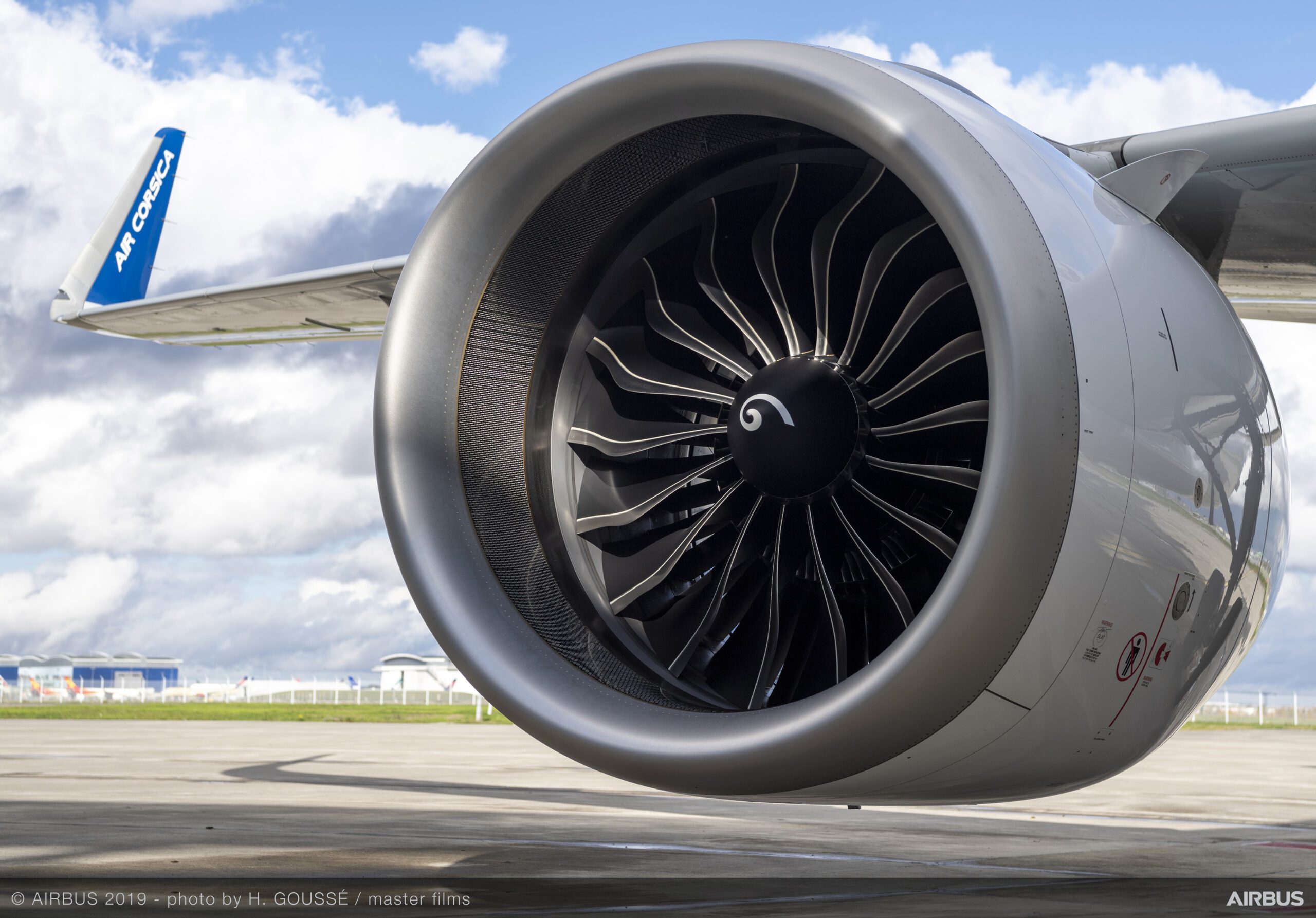
A320neo Air Corsica MSN9348 on lease from ICBC delivery details Engine scaled
Engine maker Safran Group is confident that CFM can deliver 1.700 LEAP engines to Airbus and Boeing this year. While supply chain issues do continue, CEO Olivier Andries expects them to ease over the year.
The guidance is below that of what Andries said in October during the Q3 results presentation when he stated that 2.000 engines would remain the target for 2023. Delays in castings at two specialized companies and of electrical components were the main reasons. Last month, General Electric said that the training of new staff for highly-specialized jobs will take time until the end of the year. Based on discussions with GE Aerospace, which together with Safran forms CFM International, Andries is confident that 1.700 engines are possible.
Boeing said in January that it plans to deliver 400-450 MAX, which are all equipped with the LEAP-1B. This will likely include aircraft in inventory that already have engines fitted. Airbus said on Thursday that it targets 720 deliveries. Based on deliveries in 2022, at least 520 of these will be A320neo-family aircraft, with over half of them getting LEAP-1A engines. COMAC is the third user of the LEAP, offering the -1C version on the C919, but these are so far produced in small numbers.
Safran said that the LEAP won seventy percent of all orders in 2022 and ended the year with almost 10.000 engines in the backlog. This week, it received an order for 800 engines from Air India. To put this into perspective, this number represents almost half of the 2023 production target, although deliveries are scheduled from 2025.
CFM International delivered 1.136 LEAPs in 2022, up from 845 in 2021. It also delivered sixty CFM56s, down from 107. Flight cycles of CFM engines are at 97 percent of 2019 levels this February. North and South America and the Middle East are above 2019 levels. Since the reopening of China, cycles have recovered to 93 percent. Europe is at 85 percent.
The older-generation CFM56 continues to be in use. Only 11.6 percent of the fleet is in storage, down from sixteen percent by the end of 2021. There were 114 retirements of CFM-powered aircraft compared to 84 the year before. These numbers reflect the demand for Boeing 737NGs and Airbus A320ceo family aircraft as the two airframers struggle to deliver new aircraft.
Views: 39



